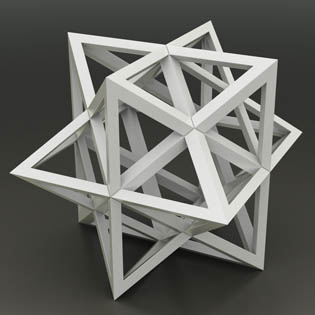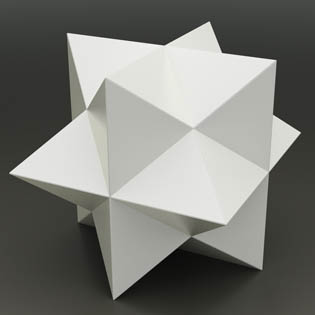
Figure 10: Development of the shape of the faces for the second stellation of the icosahedron.

Figure 11: Second stellation of the icosahedron.
2.3. Second Elevation. I used the generalized elevation process defined in section 2.1 and applied this to the octahedron, elevating the midpoint of each face of the octahedron until the new shape was similar to another polyhedron. The first polyhedron gotten this way was the rhombic dodecahedron. On this polyhedron we can apply the same process again and call the next result a second elevation of the octahedron. We stopped at the point that we got coplanar sets of elevated faces on the faces of the rhombic dodecahedron (Figure 12).

Figure 12: First and second elevation of the octahedron.


Figure 13a: Escher's polyhedron.
Figure 13a: Escher's polyhedron in "Waterfall".